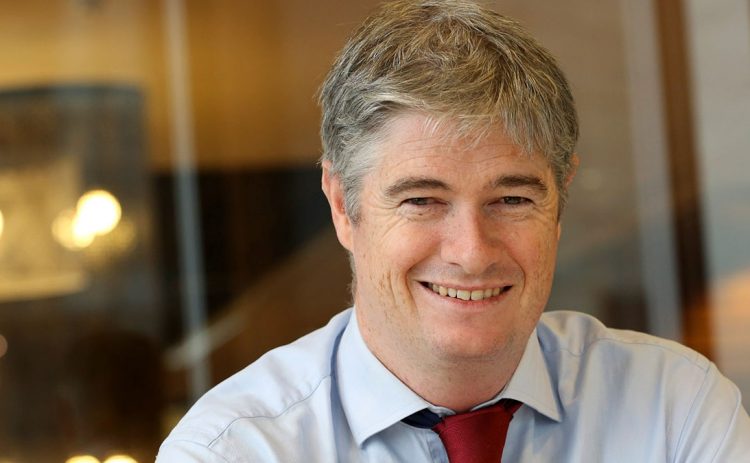
Mainstream Online Web Portal
LoginInvestors can view their accounts online via a secure web portal. After registering, you can access your account balances, periodical statements, tax statements, transaction histories and distribution statements / details.
Advisers will also have access to view their clients’ accounts online via the secure web portal.
The Point
Quick, actionable insights for investors
Multi-asset

Asset allocation: what our multi-asset team learned in its latest strategic review
Despite a volatile 2022, the long-term outlook for investment markets is more positive than it has been since 2014, says Alan Polley, a portfolio manager with Pendal’s multi-asset team.
The team has just completed its annual strategic asset-allocation process, looking at long-term trends and expected returns across asset classes.
Key to the forecast is improved returns for bonds. US 10-year treasury yields have risen almost 3 percentage points in 12 months, offering attractive yields for the first time since the GFC.
Bonds can once again play a defensive role in a traditional balanced portfolio — often called a 70:30 portfolio for its split between equities and fixed income — as well provide a reasonable level income.
This is even more important for conservative portfolios, which tend to have a higher allocation to bonds.
“Over the last five years or so there’s been commentary declaring the death of the 70:30 portfolio.
“Not only was it never dead, but now it’s definitely back and in a much stronger position than it has been for quite some time.”

Is it time to re-enter the markets? Watch these three measures
Quick view
Is it time to re-enter the markets? Watch these three measures
Many people are trying to pick the right time to re-enter the market.
Pendal’s multi-asset chief Michael Blayney is closely watching three key market drivers – trend, valuations and economy.
On these three critical measures, it could be time to start inching back into some markets.
“The trend is still negative, though there’s been some short-term bounces,” says Michael.
“On the value side, we’re now at the point where we think in aggregate, equities and bonds are fair value.”
That doesn’t mean the market won’t fall further because investors tend to overshoot on the downside, Michael says. But they ultimately revert.
On the economic front, Michael likes Australia, the UK, Japan and markets with weaker currencies that could support earnings.
“The market is like a three-legged stool. Right now, value has improved. It’s telling you be neutral.
“The trend is still negative and that’s telling you to be underweight.
“And the cycle is still negative, but we are getting more clarity on that. Investors need to be vigilant.”

Alan Polley: Consider foreign currency exposure in international share portfolios
Quick view
Alan Polley: Consider foreign currency exposure in international share portfolios
Investors should consider hedging foreign currency exposure in international share portfolios as the Aussie hits 2½ year lows against the USD, argues Pendal’s Alan Polley.
Foreign exchange exposure can offer strong diversification benefits for investors with offshore assets.
The US dollar is starting to look expensive and the Aussie tends to find support at these levels, says Alan.
“In long-term investing you should focus more on the valuation metric – buy things when they are cheap.
“Arguably the Australian dollar versus the USD appears on the cheap side.”
There are a number of important considerations – which Alan covers in detail here.
“But we think a 20 per cent FX hedge ratio on your international equities portfolio balances these various considerations.”

Michael Blayney: A quick overview of asset classes right now
Quick view
Michael Blayney: A quick overview of asset classes right now
How are different asset classes faring in these rough conditions?
Our multi-asset chief Michael Blayney has a quick snapshot which you can read here.
Equities are “getting to the position where there’s some opportunities to buy. But we are not at the point of seeing broad-based bargains yet,” says Michael.
“US large-cap stocks remain expensive, while Australian equities are closer to fair value. Globally, small and mid-cap equities are fair value, or even cheap, relative to large caps.”
Bonds remain attractive because of their defensive characteristics, but still have significant headwinds from inflation. “Where possible, we have a preference for inflation protection and Australian exposure within portfolios.”
Investment-grade credit offers reasonable returns on a medium-term basis, Michael says.
“Higher bond yields have caused REITs to de-rate significantly, moving A-REITs and global REITs back towards fair value.”

Why it’s important to consider ESG in asset allocation
Quick view
Why it’s important to consider ESG in asset allocation
ESG has long been a critical factor in investing, but it’s often considered only at a company level, says Pendal multi-asset portfolio manager Alan Polley.
ESG should be incorporated into portfolios at an asset allocation level, says Alan.
“We know asset allocation is the primary driver of investment returns. It also explains about 90 per cent of the variation of returns in a portfolio.”
Asset allocation fundamentally involves three decisions, he says:
- Changing allocations between existing asset classes
- Changing the definition of existing asset classes
- Introducing new asset classes
Consider the example of climate change, he says. “Emissions intensity is vastly higher in Australia than global markets.
“So, if you think climate change is an important investment consideration, you might tilt away from Australian equities towards international developed markets.”

Michael Blayney: Stay diversified, cautious — and ready
Quick view
Michael Blayney: Stay diversified, cautious — and ready
A stockmarket rally has left some calling the start of a new equities bull market.
But investors should stay diversified with exposure to bonds and alternatives, says Pendal’s head of multi-asset Michael Blayney.
“You have to be cautious — when you look at history, you see the strongest rallies in bear markets.
“Inflation has moderated a little bit in the US but it’s still at an uncomfortably high level.”
Global markets remain “somewhere between fair and expensive, depending on where you look”, says Michael.
“Australian equities are probably one of the better-value markets but it’s not a bargain hunter’s paradise out there in any way, shape or form.”
The golden rule is to maintain diversification, he says.
Michael recommends exposure to bonds, foreign currency and alternatives.

Fixed Interest: What’s next for rates and inflation

What’s next after today’s 50bp rates hike
Quick view
What’s next after today’s 50bp rates hike

Michael Blayney: How to invest in an inflationary environment
Quick view
Michael Blayney: How to invest in an inflationary environment
Investors haven’t faced the challenge of investing in a low-growth, high-inflation environment for decades.
But that’s the likely scenario right now, says Pendal head of multi-asset Michael Blayney.
For financial planners, equities mostly sit at the heart of a portfolio and provide long term growth. Now investors must diversify and be nimble to protect portfolios, says Michael.
“Financial planners should think about the things that provide portfolio diversification away from just equities. And that’s bonds, currency and alternatives.
“Unless you have a wonderful crystal ball, you need to own all of them.
“There are assets like commodity futures which have followed the pattern of the early 1970s, though have come off a bit more recently.
“Real assets can be attractive in the listed infrastructure space, where you do get inflation-linked cash flows.”

MICHAEL BLAYNEY: The case for a balanced portfolio
Quick view
MICHAEL BLAYNEY: The case for a balanced portfolio
One of the simplest and best ways to incrementally improve long-term investment outcomes is to rebalance — trim after strong price increases and top up after falls — says our head of Multi-Asset Michael Blayney.
“In the present environment, this would naturally lead investors to trim cash and alternatives and top up cheaper equity and bond holdings.”
Equity markets tend to fall about one year in three — meaning they rise the other two, Michael points out.
“Investing in a globally diversified portfolio — with a mix of equities, bonds, alternatives, property and cash — has proven a sound strategy for long-term wealth creation over many decades, through wars, pandemics and a host of economic crises.
“Conversely, panicking after large market falls and selling has, generally, been a wealth-destroying activity for investors.
“You see classic examples of that behaviour at work in 2008 and early 2020.
“We continue to believe investors should ‘stay the course’ in respect of their long-term strategies.”

Michael Blayney: which asset classes look good now
Quick view
Michael Blayney: which asset classes look good now
It isn’t an easy market to invest in, but there are opportunities if you know where to look. We asked Pendal’s Multi-Asset chief Michael Blayney for his view on different asset classes.
Many key equity markets remain overvalued despite the recent sell-off, says Michael. Rising bond yields are also weighing on equity valuation.
Michael likes good value markets such as the UK and Japan “and rotational themes such as value/small cap”.
High yield debt offers limited reward for risk though the recent increase in investment grade spreads mean decent returns on a medium-term basis.
Government bond yields now are better value, but bonds face a significant headwind from inflation.
The maturing cycle and event risks suggest a defensive risk stance, Michael says.
“Cash and alternatives with inflation linkage such as commodities and ‘value exposures’ are preferred.”

Michael Blayney: Three investing rules for turbulent times
Quick view
Michael Blayney: Three investing rules for turbulent times
Emotion can overwhelm strategy when markets are volatile. Pendal’s multi-asset chief Michael Blayney has three simple rules to remember in times like these:
- Don’t Panic: A well thought-out and documented philosophy and process is crucial to any active decision making during volatility. This helps you stay disciplined despite the noise. It’s easy to get swayed by emotion, or worse still, enter a crisis at a risk level that wasn’t right for you to begin with.
- Look for opportunities, but at least rebalance: Disciplined rebalancing adds to returns and reduces risk over time, compared to letting a portfolio run.
- Diversification Matters: Diversified investors know there’s always going to be some part of their portfolio that’s not working as well as others. Then the cycle turns and they need that part of the portfolio. That cycle can take a decade so an investor must be able to cope emotionally with an underperforming asset for a period. Always include enough liquidity (cash) for your short-term needs. You never want to be a forced seller.
Loading posts...
Loading posts...














